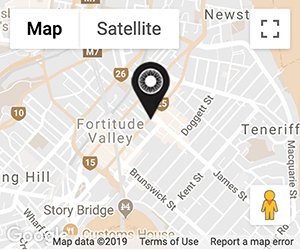What are the risks of LASIK?
Laser eye surgery has gained popularity in recent years due to its effectiveness in treating vision problems. It involves reshaping the cornea, which can improve vision and reduce dependency on glasses or contact lenses. While LASIK is considered a safe and successful procedure, like any surgery, there are some risks associated with it. In this article, we will explore the risks associated with laser eye surgery and how to minimise them.
Dry Eye Syndrome
One of the most common side effects of laser eye surgery is dry eye syndrome. During the surgery, a flap is created to allow the laser to reshape the cornea. This can affect the part of your eye that produces tears, leading to dryness in the eyes. This can be uncomfortable and cause redness which can last for a couple of months after the refractive surgery.
To reduce the risk of dry eye, we recommend using artificial tears and other treatments before and after the surgery.
Glare and halos
Another potential side effect of laser eye surgery is the development of glare and halos. While this effect is generally mild, it can be problematic at night or in low-light conditions. As time passes, the severity usually gets better.
If needed, glasses or contact lenses can be used to help control it.
Infection
Infection is a rare but serious complication that can occur after laser eye surgery. Infections can happen if bacteria enter the eye during or after the surgery. Symptoms of an infection can include redness, pain, and discharge from the eyes. In severe cases, infections can lead to vision loss or even blindness.
To reduce the risk of infection, it is important to follow the post-op instructions provided. This includes keeping your eyes clean and free from debris or irritants, using antibiotic eye drops, and avoiding activities that could introduce bacteria to the eye.
Corneal Flap Complications
During laser eye surgery, a flap is created on the cornea to allow the laser to reshape the tissue. Although rare, complications can occur during the creation of the flap or during the healing process. These complications can include incomplete flaps, irregular flaps, or flaps that become dislodged.
This can cause problems such as double vision and may require more surgery to repair. Fortunately, the incidence of corneal flap complications is very low, with studies showing a rate of less than 1% 1https://americanrefractivesurgerycouncil.org/lasik-complication-rate-side-effects/#:~:text=The%20LASIK%20complication%20rate%20is,vision%20correction%20are%20extremely%20rare.
Under-correction or Over-correction
Sometimes, a patient’s LASIK procedure may result in under-correction or over-correction of the vision problem.
Under-correction occurs when the laser does not remove enough tissue from the cornea. Over-correction occurs when too much tissue is removed from the cornea. In both cases, additional surgery may be required to correct the problem.
Regression
After surgery, some patients may experience regression, which is the gradual return of vision problems over time. This can occur if the cornea does not heal properly or if the eye undergoes further changes due to ageing or other factors. Regression can be corrected with extra surgery.
LASIK is a safe and effective treatment for correcting vision problems, with a very high success rate and low risk of complications (around 1%). Yet, as with any surgery, there are some risks and potential complications associated with the procedure. It is important to discuss these risks with your surgeon and to consider whether LASIK surgery is the right choice for you.
To lower the chance of laser eye surgery risks, choose a skilled surgeon, follow post-surgery instructions (that includes several months after surgery), and check your eye health regularly.
If you’re considering laser eye surgery but are worried about the risks, book a free assessment to discuss this further.
Folds in the flap
The next day following laser, there is a very small number of patients, about 1%, where there are microscopic little folds in the flap that need to be smoothed out, which is a relatively simple process.
Once that’s done, the laser flap is typically stable, and the vision returns to being excellent.
Infection and loss of vision
As far as things that can seriously affect the vision, such as infection, the risk for those types of problems is less than one in 20,000.
The risk of losing vision altogether in the eye from laser is less than one in 3 million.2All About Vision. 2021. Can LASIK Make You Go Blind?. [online] Available at: <https://www.allaboutvision.com/visionsurgery/faq-blind.htm> [Accessed 10 June 2021]
Those are very, very, very rare cases which only ever occur in a small number of LASIK patients in the millions of surgeries that have been done since the laser was developed in the early 1990s.
If you’re considering LASIK, the most important things to remember is:
- We know who is more at risk because we’re experienced
- We know how to avoid risks because we perform the right tests, techniques and use the right technology for the job
- We look for side effects at your aftercare appointments
- We know that risks are often minor and temporary
- We know that if the risks aren’t temporary, we can address them because our expertise and partnership with our sister clinic, OKKO Eye Specialist Centre, extends far beyond laser eye surgery
- After 20 million procedures, you can rest assured LASIK surgery is still one of the safest elective procedures available.
If you would like to learn more about LASIK eye surgery in Brisbane and understand which treatment is going to be most appropriate for you to free you from glasses and contact lenses, then please go to our website and book online for a free laser vision assessment.






